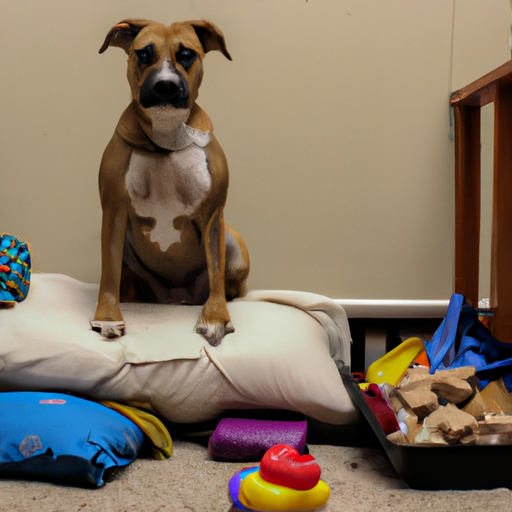Resource guarding is a natural canine behavior where a dog becomes protective over its resources, such as food, toys, and sometimes even people. It’s crucial to understand, however, that this behavior can escalate and become problematic if not properly managed. In this comprehensive guide, we delve into the intricacies of resource guarding, providing practical strategies to manage and prevent this behavior.
Table of Contents
- What Is Resource Guarding?
- Types of Resource Guarding
- Causes of Resource Guarding
- How to Prevent Resource Guarding
- Strategies to Manage Resource Guarding
- Frequently Asked Questions
Key Takeaways
- Resource guarding is a common canine behavior where a dog protects its possessions.
- The behavior can range from mild to severe and is often triggered by fear or anxiety.
- Preventative measures can be taken to manage and avoid resource guarding.
- Interventions should always be positive and never involve punishment.
What Is Resource Guarding?
Resource guarding refers to a dog displaying behavior (growling, aggressive posturing, biting) aimed at protecting its valuable resources. These resources could include food, toys, beds, or even a human companion. It’s important to realize that this is a natural survival instinct for dogs. However, when it becomes severe or frequent, it can pose problems for both the dog and its caregivers.
Types of Resource Guarding
Resource guarding can be categorized into three main types:
-
Food Guarding: This is perhaps the most common form of resource guarding. Dogs exhibiting this behavior may growl, snap, or bite if another animal or human comes near their food.
-
Object Guarding: Here, dogs guard non-food items, such as toys, chew bones, or stolen items like socks or remote controls.
-
Location Guarding: Dogs may guard specific areas, like their bed, crate, or a favorite spot on the couch. They may also guard their human family members.
Understanding these types can help in identifying and dealing with resource guarding effectively.
Causes of Resource Guarding
Resource guarding often stems from fear or anxiety. Dogs may fear losing a valuable resource, especially if they’ve been deprived in the past. In other cases, it may be due to a lack of proper socialization or traumatic experiences.
How to Prevent Resource Guarding
Preventing resource guarding involves teaching your dog that giving up something doesn’t always mean loss. Here are some strategies:
-
Trading Up: Teach your dog the “leave it” command, then reward them with a higher-value item. This practice makes them associate giving up resources with something positive.
-
Hand Feeding: Hand feeding can help build trust and reduce food aggression. You can also add more food to your dog’s bowl while they’re eating to create positive associations.
-
Avoidance: If your dog guards specific items, it may be best to avoid these triggers when possible.
For more specific strategies, check out this comprehensive guide on Preventive Vet.
Strategies to Manage Resource Guarding
Managing resource guarding requires patience, consistency, and positive reinforcement. Here are some strategies:
-
Desensitization: Gradually expose your dog to the trigger at a low intensity, rewarding them for remaining calm.
-
Counter-Conditioning: Change your dog’s emotional response to the trigger by associating it with something positive.
-
Professional Help: In severe cases, it may be beneficial to enlist the help of a professional dog trainer or behaviorist.
For a more in-depth look at these strategies, One Top Dog provides excellent resources.
Frequently Asked Questions
1. Is resource guarding a sign of dominance?
No, resource guarding is often a sign of fear or anxiety, not dominance.
2. Can resource guarding be cured?
While it may not be completely ‘cured’, positive reinforcement methods can significantly reduce and manage the behavior.
3. Should I punish my dog for resource guarding?
Absolutely not. Punishment can exacerbate the problem and damage your relationship with your dog. Instead, focus on positive reinforcement techniques.
For more information and answers to common questions about dog behavior, check out these articles on One Top Dog, One Top Dog training methods, and One Top Dog’s guide to dog food.
In conclusion, understanding and managing resource guarding is crucial for maintaining a healthy and safe relationship with your dog. Always approach the issue with patience, empathy, and a focus on positive reinforcement. If you’re unsure, don’t hesitate to seek professional help.



